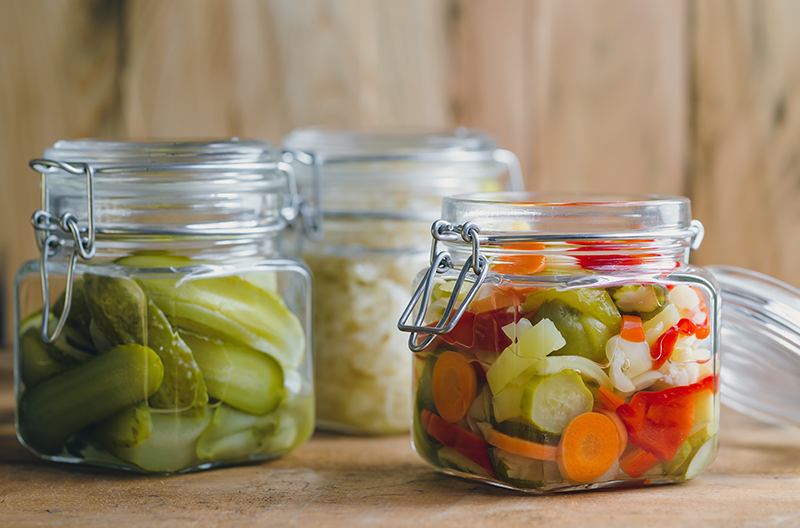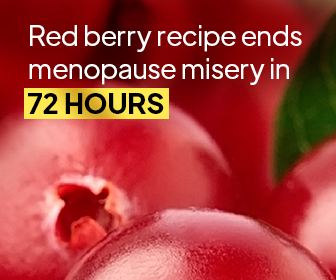Everyone is on the lookout for the new secret to better health. With a million different methods out there, it can be difficult to tell which ones actually work. Many of these so-called secrets are complicated to implement or, what’s worse, they are completely ineffective.
How would you like to try one that is both simple and effective?
When it comes to healthy foods, fermented foods may not be the first thing that comes to mind. Generally speaking, the healthiest foods are the ones that have a short time between the farm and the table. You may be surprised to learn, then, that fermented foods can actually provide you with a wide variety of health benefits.
Wondering how fermented foods are made and what kind of benefits they can provide for your health? You’ve come to the right place! Keep reading to learn everything you’ve ever wanted to know about fermented foods and to receive our list of the top 8 fermented foods you should add to your diet.
What Are the Benefits of Fermented Foods?
Increasing your intake of fermented foods and beverages can help you lose weight, improve digestion, and boost your immune system.
How does it work? It all starts with the microbiome – the large collection of microbes and bacteria that live inside your body. There are about 100 trillion bacteria in your body at any given time. That is ten times the number of cells inside you! Naturally, it stands to reason that keeping your bacteria in good standing is a direct way to keep yourself healthy.
It is important to understand that there are both good bacteria and bad bacteria. In general, it is best to have a ratio of about 85% good bacteria to 15% bad bacteria. This is where fermented foods come into play – they provide an easy source of live beneficial bacteria to help create an ideal microbiotic environment for health and weight loss.
Fermented foods act as natural probiotics, supplementing your collection of healthy bacteria and keeping the bad ones in check. Many people take probiotics in the form of pills, powders, and capsules. Instead, you can get a more organic solution that provides the same benefits by eating fermented foods. In helping to balance your microbiome, fermented foods can provide a whole slew of benefits.
While the most obvious benefits are related to weight loss and immune health, a healthy microbiome can also have mental benefits. You may see alleviated symptoms of depression, anxiety, or brain fog if you start to eat more fermented foods. Additionally, fermented foods can help to combat skin problems, hormonal issues, digestive problems, and fatigue. Simply put, a healthy microbiome is beneficial to the endocrine, immune, digestive, and nervous systems.
What Are the Top Fermented Foods?
When many people think of fermented foods, they think of bad smells and unpleasant tastes. However, there is actually a wide array of fermented foods available to choose from! They come in many different styles and flavors but all of them have the potential to provide a healthy boost for your microbiome.
Unfortunately, fermented foods are somewhat uncommon in Western cultures. This means that there may not be as many packaged options readily available to you. However, you should be able to find any number of fermented options in a quick trip to the grocery store if you know where to look. By opening yourself up to these possibilities, you just may find a healthy snack or meal that you end up loving. Keep reading to learn about the top 8 fermented foods for improved health.
The Top 8 Fermented Foods for Better Health
Pickles
Pickles are the first fermented food that many people in the Western world try. Pickles can be served in a variety of ways and they come in many different flavors. You can eat them plain or use them on burgers, in salads, or even on pizza. Because of their versatility, accessibility, and familiarity, pickles are a great option for anybody looking to get a start with eating more fermented vegetables. Don’t forget all of the healthy probiotics that they can provide!
Sauerkraut
When you think about healthy food options, fermented cabbage is probably not the first or most appetizing option that comes to mind. However, sauerkraut is relatively inoffensive as a fermented food and its versatility is underappreciated. While many fermented foods are associated with pungent flavors, sauerkraut generally goes well with just about anything without being overpowering.
While sauerkraut is most commonly served with bratwurst, it is often left behind as a condiment or salad staple. It can also mixed with scrambled eggs, tossed onto a sandwich, or even used in a taco. It can even be mixed into a smoothie!
In addition to being a versatile food, sauerkraut provides a number of health benefits. The cabbage is pickled in a process known as lacto-fermentation which results in glucose and other sugars being converted into energy and lactic acid. It provides a number of healthy live bacteria, making it a wonderful option for improving the balance of your microbiome.
Yogurt
Another option that many people are already used to but don’t think of as a fermented food, yogurt is a popular healthy breakfast or snack option.
One thing to be mindful of when eating yogurt is that many popular brands of yogurt are full of sugars, artificial sweeteners, and artificial preservatives. Besides some of the more obvious health problems that these can cause, these ingredients can actually kill any live bacteria added to the yogurt, destroying the health benefits.
Plain, unflavored yogurt is the best source of healthy bacteria that you can get from a breakfast food. If that sounds bland, don’t worry – you can still mix in fresh fruit on your own to create a snack or meal that is yummy, flavorful, and fantastic for the microbiome.
Kimchi
While many people may have heard of kimchi before, very few really know what this Korean staple is all about. It is generally served as a side dish and it is made from fermented vegetables such as cabbage and radishes. Where it really gets its popularity from, however, is the flavorful blend of spices that go along with it – spices like chili powder, scallions, garlic, and ginger.
Not only is kimchi full of flavor, but it is one of the healthiest probiotic foods out there! It has been shown to have a significant and direct impact on weight and body fat, which makes it a perfect option for anybody looking to lose weight and keep it off.
Kimchi is also shown to have other health benefits including improved blood sugar and blood pressure, lowered cholesterol, and reduced risk for constipation, and colon cancer. It has also been shown to reduce stress, depression, osteoarthritis, atherosclerosis, and liver disease.
Kefir
Somewhat similar to yogurt, this fermented milk drink is a great way to benefit your microbiome in beverage form. Drinking kefir will aid your microbial balance while providing support to your immune system. Historically, it has even been used as a treatment for tuberculosis and cancer.
Like yogurt, you should be mindful of any sugars, preservatives, or flavorings that may come in store-bought kefir. These can eliminate live bacteria and result in a sugary drink that does more bad for you than good. However, when it is served in a natural way, kefir is a healthy beverage option. It is a source of vitamin B12, vitamin K2, calcium, magnesium, biotin, folate, enzymes, and probiotics.
When it comes to drinking kefir, you can still mix in your own fresh fruit if you want to add some sweet flavor. Kefir can be made from cow’s milk, or you can get a goat’s milk variety if you are sensitive to cow’s milk. Whatever the case, it is a highly recommended option for keeping the balance of healthy bacteria in your microbiome in check while enjoying a tasty beverage.
Kombucha
Speaking of delicious fermented beverages, you have probably heard the term kombucha thrown around at some point, but you may not know what it really is. This fizzy fermented tea contains a whole litany of microorganisms, which have the potential to keep a very healthy balance of bacteria in your gut.
Be mindful of sugar when trying kombucha, as many packaged varieties try to sweeten things up in a way that may not be particularly helpful to the health-minded folks that are purchasing it. However, when served properly it can be a straightforward way to keep the microbiome in good form. It is also high in glucaric acid which aids the liver and supports healthy gut bacteria along with digestion. On top of that, it will give you a quick energy boost!
Miso
If you have ever eaten sushi or been to a Japanese restaurant, you may be familiar with miso soup. What you may now know is that miso is actually a paste made from fermented soybeans and it has numerous dietary applications. While it can be mixed into soup along with healthy vegetables, it can also be used in salad dressings, added to burgers and sandwiches, or added to marinades and sauces among other serving methods.
Whichever way you choose to serve miso, it is a versatile and tasty way to benefit your microbiome, helping to keep that ratio of healthy to unhealthy bacteria exactly where you want it. Miso is full of essential minerals such as potassium and it contains plenty of microorganisms. It is fantastic for energy and stamina, making it a wonderful option for anybody that leads an active lifestyle or for those who suffer from fatigue. It can also improve digestion and have positive effects on blood pressure, making it a wonderfully healthy option.
If you haven’t tried miso, try throwing a bit into your next soup along with your favorite vegetables and see if you enjoy your concoction. If so, you have got yourself a simple and delicious source of healthy live bacteria.
Tempeh
Perhaps less known in Western culture than many of the previously listed sources of live bacteria, tempeh is actually made from fermented soybeans. It is a traditional Indonesian food product that has many applications, making it a fantastic way for just about anybody to get some fermented food into their diet.
Tempeh can be prepared on a sandwich, fried into bacon, mixed into stir-fry, used as a meat substitute, cooked into curries, or tossed into salads. There is no shortage of recipes out there that utilize tempeh! It provides a complete source of protein with plenty amino acids as well, making it a particularly healthy option however you choose to eat it.
Tempeh has been shown to reduce cholesterol, increase bone density, reduce menopausal symptoms, and has even been used to treat cancer and inflammatory diseases. It isn’t just a way for you to lose weight, either – there is a fantastic assortment of health benefits all packed into these yummy soybeans.

Summary: Getting in the Groove with Fermented Foods
Fermented foods may not be the first that you think of when you decide it is time to start eating healthier, but they may just be exactly what you need. When you take the time to improve the balance of the bacteria in your microbiome, you will notice the benefits to your health and everyday life.
One of the main reasons that so many people steer clear of fermented foods is that they think of pungent smells and acidic tastes. While some people love that, it is definitely not for everybody. However, there are actually many different kinds of healthy fermented foods available that all have different tastes. With a little bit of experimentation, it is a pretty good bet that you will be able to find a fermented option that you love.
Action Steps: How to Find the Right Fermented Food for You
- Pick out three options from the list above. If you haven’t tried fermented foods before, try selecting the milder options like tempeh and miso that you can easily mix with your favorite foods.
- Look up a recipe for each of the foods you selected. Some of them are best eaten alone, while with others mix well with other foods that you already eat (such as mixing tempeh into a salad).
- Once a week for the next three weeks, try making one of the recipes that you selected. By taking the time to make the recipe instead of buying a prepackaged version, you can be certain that you are not getting any added sweeteners. You will also be buying into the lifestyle of taking your health and diet into your own hands, which can be tremendously rewarding.
- Take note of which fermented foods you enjoyed and could see yourself eating more of in the future. Look for comparable fermented options.
- Also take note of which fermented foods you did not enjoy. Was there a fundamental problem for you with one of the base ingredients, or could you make it more enjoyable by modifying the recipe to better suit your taste? Take a look at other recipes to help come up with ideas to make the fermented option more enjoyable for you.
If you find one fermented food that works, you are on the right track. If you can get three or more into your meal rotation, you are going to be able to really get the benefits going with a wide variety of healthy and tasty options. This is a completely achievable goal thanks to the wide variety of fermented options out there. With a little bit of patience and experimentation, you will be able to add in some of the healthiest options yet to your diet!








